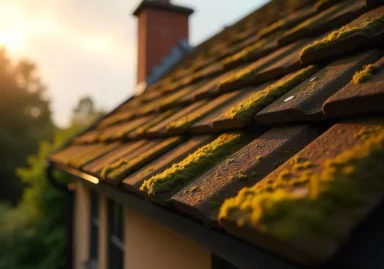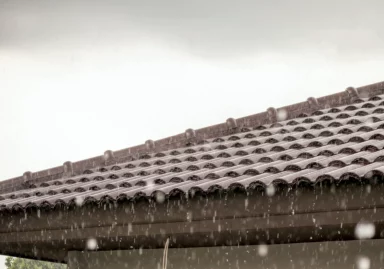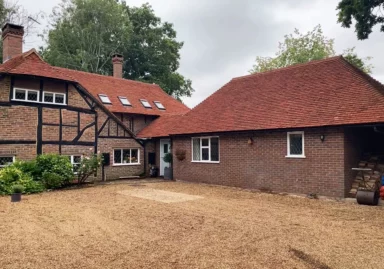Can you clean your roof?
11th September 2024


The roof of your home is your first line of defence against the ever-changing British weather. In our last blog, we looked at ways to check your roof after storm damage. This time, we focus on the impact of heavy rain and roof tile problems.
As we see a rise in extreme weather conditions, roof tiles are sustaining an increasing level of force from heavy downpours. The condition of your roof tiles is the key to protecting your home against the elements. Damaged tiles can lead to serious issues, but regular roof maintenance and timely repairs can help you deal with these problems.
Below are several roof problems that can occur after a heavy rainstorm:
Heavy rainfall can loosen roof tiles, potentially causing them to dislodge completely. Not only does this compromise the aesthetic appearance of your roof, but bare areas could cause water to penetrate into your home. Even a small leak can lead to major water damage over time.
Rain can act as a relentless assault on your roof. Eventually, this can wear down your tiles, placing pressure on any weaknesses that may have developed due to age. When tiles break or crack, they can no longer effectively shield your home from the elements. Water infiltration then becomes a big concern, as it can seep into your roof and start a cascade of damage throughout your home.
Your guttering system plays a pivotal role in protecting your home during heavy rainfall. It collects rainwater in its troughs and channels it through downpipes away from your home’s foundation. If your gutters become damaged, rainwater could spill over and run down your exterior walls and lower roof areas. If water is allowed to accumulate, this can eventually lead to serious structural damage.
Whether you have a pitched or flat roof, these areas of your home are typically designed with a slope. This allows rainwater to flow efficiently into the surrounding guttering system. However, when your roof fails to direct water away from your property, stagnant water can start pooling. When this happens, these areas can become an attractive environment for birds, and lichen, moss and algae.
Water that finds its way into your roof can lead to the growth of mould and mildew within your loft space. This can produce an unpleasant, musty odour, as well as posing health risks. When mould and mildew spread throughout your home, this can cause unsightly damage and respiratory problems.
When water infiltrates your roof, the wooden structure that supports your roofing system can become saturated, including roof joints. Prolonged exposure to moisture creates perfect conditions for rot. Wood rot is not only structurally damaging, but it can be very costly to repair.
Our unpredictable British weather can change within hours. When cold weather strikes after a heavy rainfall it can create additional challenges. ‘Freeze-thaw’ is a process where frozen rainwater can lead to roof tiles cracking. Any micro roots growing in between your roof tiles will expand when frozen. This process weakens the structural integrity of your tiles and makes them more susceptible to damage.
Dealing with damage to your roof tiles caused by heavy rainfall can affect both the exterior and interior of your home. As well as roof tile problems, you may need to repair the inside of your home and any areas affected by water damage. Therefore, regularly inspect your roof to ensure the integrity of your roof tiles and to prevent any water penetration.
Always use a professional roof company to inspect and carefully clean your roof. Fully trained in all aspects of roof health and safety, we only use specialist equipment to access your roof. We won’t step onto your roof, and we never use high-pressure power jets.
Our process includes using a fungicidal wash to kill any micro roots such as moss, algae or lichen. After your roof has been cleaned, your tiles will be treated with the highly protective RENOTEC® Roof Coating, which comes with a 10-year guarantee.
Our team are also clay roof specialists so we can both clean and refurb clay roofs. Due to our vast network of suppliers, we can also individually source replacement tiles.
For advice or a free, no-obligation roof cleaning & restoration quotation, contact us
11th September 2024

8th September 2022

2nd April 2023
